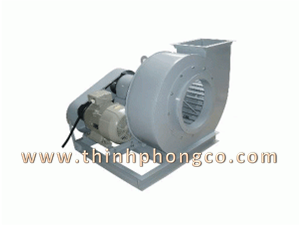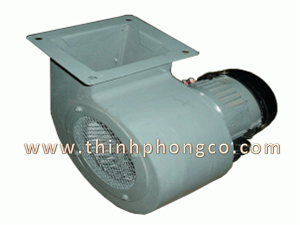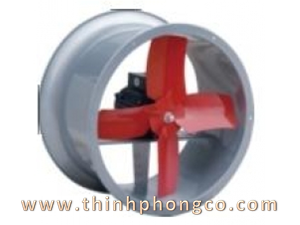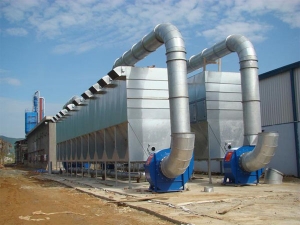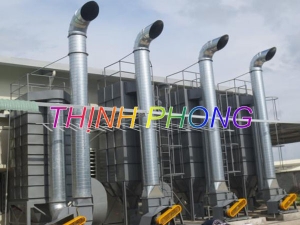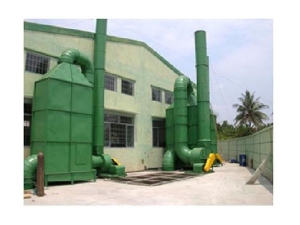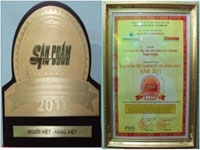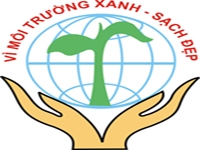The Law on Environmental Protection 2005
ORDER No. 29/2005/L-CTN OF DECEMBER 12, 2005, ON THE PROMULGATION OF LAW
THE PRESIDENT OF THE SOCIALIST REPUBLIC OF VIETNAM
Pursuant to Articles 103 and 106 of the 1992 Constitution of the Socialist Republic of Vietnam,
which was amended and supplemented under Resolution No. 51/2001/QH10 of December 25,
2001, of the Xth National Assembly, the 10th session;
Pursuant to Article 91 of the Law on Organization of the National Assembly;
Pursuant to Article 50 of the Law on Promulgation of Legal Documents,
HEREBY PROMULGATES:
The Law on Environmental Protection,
which was passed on November 29, 2005, by the XIth National Assembly of the Socialist
Republic of Vietnam at its 8th session.
President of the Socialist Republic of Vietnam
TRAN DUC LUONG
LAW ON ENVIRONMENTAL PROTECTION
(No. 52/2005/QH11)
Pursuant to the 1992 Constitution of the Socialist Republic of Vietnam, which was amended and
supplemented under Resolution No. 51/2001/QH10 of December 25, 2001, of the Xth National
Assembly, the 10th session;
This Law provides for environmental protection.
Chapter I
GENERAL PROVISIONS
Article 1.- Scope of regulation
This Law provides for activities of environmental protection; policies, measures and resources for
environmental protection; rights and obligations of organizations, households and individuals in
environmental protection.
Article 2.- Subjects of application
This Law applies to state agencies, organizations, households and individuals in the country;
overseas Vietnamese, foreign organizations and individuals carrying out activities in the territory
of the Socialist Republic of Vietnam.
Where treaties to which the Socialist Republic of Vietnam contain provisions different from those
of this Law, such treaties shall apply.
Article 3.- Interpretation of terms
In this Law, the following terms shall be construed as follows:
1. Environment comprises natural and man-made physical factors that surround human beings
and affect life, production, existence and development of human beings and living organisms.
2. Environment components are physical elements that constitute the environment, including soil,
water, air, sound, light, living organisms, ecosystems and other physical forms.
3. Environmental protection activities mean activities of keeping the environment sound, clean
and beautiful; preventing and restricting adverse impacts on the environment, responding to
environmental incidents; remedying environmental pollution and degradation, rehabilitating and
improving the environment; exploiting and rationally and economically using natural resources;
and protecting biodiversity.
4. Sustainable development means development that meets the needs of the present generation
without harming the capability of meeting those of future generations on the basis of close and
harmonious combination of economic growth, assurance of social advancement and
environmental protection.
5. Environmental standards mean allowable limits of parameters of the quality of surrounding
environment, the content of pollutants in wastes, set by competent state agencies as a basis for
environment management and protection.
6. Environmental pollution means the status that environmental components have been changed
to the extend beyond environmental standards and adversely affect human beings and living
organisms.
7. Environmental degradation means qualitative and quantitative deterioration of environmental
components, adversely affecting human beings and organisms.
8. Environmental incidents mean disasters or risks occurring in the process of human activities, or
abnormal changes of nature causing serious environmental pollution, degradation or alteration.
9. Pollutants mean substances or physical factors that cause environmental pollution when they
are present in the environment.
10. Wastes mean substances in the solid, liquid or gaseous form discharged from production,
business, service, daily life or other activities.
11. Hazardous wastes mean wastes containing elements that are toxic, radioactive, inflammable,
explosive, abrasive, contagious, poisonous or otherwise harmful.
12. Waste management means activities of sorting, collecting, transporting, minimizing, reusing,
reprocessing, treating, destroying and discarding wastes.
13. Scraps mean products and materials discarded during the process of production or
consumption which are recovered for use as production materials.
14. Load capacity of the environment means the allowable limit of the environment to receive and
absorb pollutants.
15. Ecosystem means a system of groups of living organisms co-existing, developing and
interacting with one another in a given natural geographical area.
16. Biodiversity means the abundance in gene pools, species of organisms and ecosystems.
17. Environmental monitoring means the process of systematic observation of the environment
and factors that exert impacts on the environment in order to supply information for the
assessment of the status and changes in the quality of, and adverse impacts, on the
environment.
18. Environmental information means figures and data about environmental components;
reserves, ecological value and economic value of natural resources; impacts on the environment;
wastes; degree of environmental pollution and degradation; and information about other
environmental issues.
19. Strategic environmental assessment means analysis and forecast of impacts on the
environment to be exerted by draft development strategies, plannings and plans before they are
approved in order to attain sustainable development.
20. Environmental impact assessment means analysis and forecast of impacts on the
environment to be exerted by specific projects so as to work out measures to protect the
environment when such projects are carried out.
21. Greenhouse gas means assorted gases that affect the thermal exchange between the earth
and surrounding atmosphere, thereby warming up the air surrounding the earth.
22. Greenhouse gas quota means the volume of greenhouse gas which each country is permitted
to emit into the atmosphere in accordance with relevant treaties.
Article 4.- Principles for environmental protection
1. Environmental protection must be in harmony with economic development and assure social
advancement for national sustainable development; protection of the national environment must
be connected with protection of the regional and global environment.
2. Environmental protection is the cause of the whole society, the right as well responsibility of
state agencies, organizations, households and individuals.
3. Environmental protection activities must be carried out continuously, taking prevention as the
main activity in combination with remedying environmental pollution, degradation and improving
environmental quality.
4. Environmental protection must accord with natural, cultural and historical laws and
characteristics and suit the level of socio-economic development of the country in each period.
5. Organizations, households or individuals that cause environmental pollution or degradation
shall have to remedy such environmental pollution or degradation, pay compensation therefor
and bear other liabilities as provided for by law.
Article 5.- State policies toward environmental protection
1. To encourage and facilitate all organizations, population communities, households and
individuals to participate in environmental protection activities.
2. To step up propaganda, education and mobilization in combination with application of
administrative, economic and other measures to build self-consciousness and discipline in
environmental protection activities.
3. To rationally and economically use natural resources, develop clean and renewable energies;
step up recycling, reuse and reduction of wastes.
4. To prioritize settlement of pressing environmental problems; concentrate on handling seriously
polluting establishments; rehabilitate the environment in polluted and degraded areas; and attach
importance to protecting the environment in urban centers and residential areas.
5. Investment in environmental protection is development investment; to diversify capital
investment sources for environmental protection and arrange separate funds for environmental
activities in annual state budgets.
6. To grant land and tax preferences and provide financial supports for environmental protection
activities and environment-friendly products; harmonizing environmental protection with efficient
use of environmental components for development.
7. To increase human resource training, encourage research, application and transfer of scientific
and technological achievements in environmental protection; form and develop an environmental
engineering industry.
8. To expand and raise the effectiveness of international cooperation; fully realize international
commitments to environmental protection; encourage organizations and individuals to participate
in undertaking international cooperation in environmental protection.
9. To develop infrastructure works for environ-mental protection; enhance national capacity of
environmental protection toward regularity and modernization.
Article 6.- Environmental protection activities to be encouraged
1. Propaganda, education and mobilization of all the people to participate in environmental
protection; keeping environmental sanitation and protecting natural landscapes and biodiversity.
2. Protection and rational and economical use of natural resources.
3. Reduction, collection, recycling and reuse of wastes.
4. Development and use of clean and renewable energies; reduction of ozone-layer-depleting
greenhouse gas.
5. Registration of establishments that meet environmental standards and environment-friendly
products.
6. Scientific research, transfer and application of technologies for treating and re-cycling wastes;
environment-friendly technologies.
7. Investment in the construction of establishments to manufacture environmental protection
equipment and tools; produce and trade in environment-friendly products; and provide
environmental protection services.
8. Conservation and development of indigenous gene pools; crossbreeding and import of gene
sources of economic value and environmental benefit.
9. Building of environment-friendly villages, hamlets, agencies, production, business and service
establishments.
10. Development of self-management activities and environmental sanitation services in
population communities.
11. Formation of environmental sanitation-keeping lifestyle and habits, abolition of environmentunfriendly
customs and practices.
12. Contribution of knowledge, efforts and finance to environmental protection activities.
Article 7.- Prohibited acts
1. Destroying and illegally exploiting forests or other natural resources.
2. Exploiting and catching natural living resources by destructive means, tools and methods,
during seasons and in quantities banned by law.
3. Exploiting, trading, consuming and using rare and precious wild plants and animals on the
banned lists issued by competent state agencies.
4. Burying toxic substances, radioactive substances, wastes and other hazardous substances
outside prescribed places and contrary to technical processes for environmental protection.
5. Discharging wastes not yet treated up to environmental standards; toxic, radioactive and other
hazardous substances into the land or water sources.
6. Emitting smoke, dust or gases with toxic substances or odor into the air; dispensing radiation,
radioactivity and ionized substances at levels in excess of permitted environmental standards.
7. Causing noise and vibration in excess of permitted standards.
8. Importing machinery, equipment and means that do no meet environmental standards.
9. Importing and transiting wastes in any form.
10. Importing and transiting animals and plants not yet quarantined; microorganisms outside
permitted lists.
11. Producing and trading in products harmful to human health, living organisms and ecosystems;
producing and using construction raw materials and materials containing toxic elements in excess
of permitted standards.
12. Encroaching upon natural heritages and nature conservation zones.
13. Damaging works, equipment and facilities in service of environmental protection activities.
14. Carrying out illegal activities or living in restricted zones where human health and life is
exposed to extreme environmental danger, as identified by competent state agencies.
15. Covering up acts of destroying the environment, obstructing environmental protection
activities, distorting information resulting in bad consequences on the environment.
16. Other prohibited acts related to environmental protection as provided for by law.
Chapter II
ENVIRONMENTAL STANDARDS
Article 8.- Principles for formulation and application of environmental standards
1. Formulation and application of environmental standards must abide by the following principles:
a/ Meeting environmental protection objectives, preventing environmental pollution, degradation
and incidents;
b/ Being promulgated in a timely manner, feasible, suitable to the socio-economic development
level and technological level of the country and meeting international economic integration
requirements;
c/ Being suitable to regional and branch characteristics, production, business and services types
and technologies.
2. Organizations and individuals must observe environmental standards published by the State
for compulsory application.
Article 9.- Contents of national environmental standards
1. Grade of standard.
2. Environmental parameters and limit values.
3. Subjects of standard application.
4. Procedures and method of standard application.
5. Conditions required for standard application.
6. Methods of measurement, sampling and analysis.
Article 10.- System of national environmental standards
1. The system of environmental standards consists of standards of surrounding environment
quality and standards of wastes.
2. Surrounding environment quality standards include:
a/ Group of environmental standards of soil for agricultural production, forestry, fisheries and
other purposes;
b/ Group of environmental standards of water surface and groundwater for supply of water for
drinking, daily life, industries, aquaculture, agricultural irrigation and other purposes;
c/ Group of environmental standards of coastal seawater for aquaculture, entertainment,
recreation and other purposes;
d/ Group of environment standards of air in urban areas and rural residential areas;
e/ Group of standards of noise, light and radiation in residential areas and public places.
3. Standards of wastes include:
a/ Group of standards of waste water discharged from industrial and service activities, waste
water discharged from husbandry and aquaculture, waste water from daily life and other
activities;
b/ Group of standards of industrial gas emissions, gases emitted from equipment used for
incineration of daily-life, industrial and medical waste matters and from other processes of
treatment of wastes;
c/ Group of standards of gas emissions from vehicles, machinery and special-use equipment;
d/ Group of standards of hazardous wastes;
e/ Group of standards of noise and vibration caused by vehicles, production, business and
service establishments, and construction activities.
Article 11.- Requirements on surrounding environment quality standards
1. Surrounding environment quality standards shall specify the maximum allowable values of
environmental parameters in conformity with the purpose of using environmental components,
including:
a/ Minimum values of environmental parameters that ensure normal life and growth of human
beings and living organisms;
b/ Maximum allowable values of harmful environmental parameters that will not cause adverse
impacts on normal life and growth of human beings and living organisms.
2. Environmental parameters specified in environmental quality standards must be accompanied
by standard measurement, sampling and analysis methods for determination of such parameters.
Article 12.- Requirements on waste standards
1. Waste standards must specify the maximum values of pollution parameters of waste so as not
to cause any harm to human beings and living organisms.
2. Pollution parameters of waste must be based on the toxicity and quantity of the waste
discharged and the load capacity of the environment that receives the waste.
3. Environmental parameters specified in waste standards must be accompanied with standard
measurement, sampling and analysis methods for determination of such parameters.
Article 13.- Issuance and declaration of application of national environmental standards
1. The Government shall stipulate the competence, order and procedures for formulating, issuing
and recognizing national environmental standards in accordance with the provisions of law on
standardization.
2. The Ministry of Natural Resources and Environment shall publish and provide for the roadmap
of application, regional, area and branch coefficients for application of national environmental
standards in conformity with the load capacity of the environment.
3. Adjustment to national environmental standards shall be made once every five years; in case
of necessity, adjustment to several standards which are no longer appropriate and addition of
new standards may be made at shorter intervals.
4. National environmental standards must be widely published among organizations and
individuals for knowledge and compliance.
Chapter III
STRATEGIC ENVIRONMENTAL ASSESSMENT, ENVIRONMENTAL IMPACT ASSESSMENT
AND ENVIRONMENTAL PROTECTION COMMITMENT
Section 1. STRATEGIC ENVIRONMENTAL ASSESSMENT
Article 14.- Objects subject to elaboration of strategic environmental assessment reports
1. National socio-economic development strategies, plannings and plans.
2. Strategies, plannings and plans for development of branches or domains on a national scale.
3. Socio-economic development strategies, plannings and plans of provinces, centrally run cities
(hereinafter collectively referred to as provinces or provincial level) or regions.
4. Plannings for land use, forest protection and development; exploitation and utilization of other
natural resources in inter-provincial or inter-regional areas.
5. Plannings for development of key economic regions.
6. General plannings of inter-provincial river watersheds.
Article 15.- Elaboration of strategic environmental assessment reports
1. Agencies assigned to formulate projects mentioned in Article 14 of this Law shall have to
elaborate strategic environmental assessment reports.
2. Strategic environmental assessment report constitutes an important content of the project and
must be made at the same time with project formulation.
Article 16.- Contents of strategic environmental assessment reports
1. Overview of the project’s objectives, size and characteristics related to the environment.
2. General description of natural, socio-economic and environmental conditions related to the
project.
3. Forecasts for possible bad environmental impacts when the project is executed.
4. Citation of sources of figures and data, methods of assessment.
5. Proposed orientations and measures to address environmental issues during project
execution.
Article 17.- Appraisal of strategic environmental assessment reports
1. Strategic environmental assessment reports shall be appraised by a council organized in
accordance with the provisions of Clause 7 of this Article.
2. An appraisal council for national and inter-provincial projects shall be composed of a
representative of the project-approving agency; representatives of ministries, ministerial-level
agencies, Government-attached agencies and provincial-level People’s Committees related to the
project; experts who have professional experience and qualifications relevant to the content and
characteristics of the project; representatives of other organizations and individuals as decided by
the agency competent to set up the appraisal council.
3. An appraisal council for provincial-level projects shall be composed of representatives of the
provincial-level People’s Committee; a specialized environmental protection agency and related
provincial-level departments and branches; experts who have professional experience and
qualifications relevant to the content and characteristics of the project; representatives of other
organizations and individuals as decided by the agency competent to set up the appraisal council.
4. More than 50% of members of an appraisal council mentioned in Clauses 2 and 3 of this Article
must have expertise in environment and other domains related to the contents of the project.
Persons who are directly involved in elaborating strategic environmental assessment reports shall
not be allowed to participate in the appraisal council.
5. Organizations and individuals may send petitions and recommendations concerning
environmental protection to the agency setting up the appraisal council and the project-approving
agency; the council and project-approving agency shall have to take into consideration petitions
and recommendations before making conclusions or decisions.
6. Results of appraisal of strategic environmental assessment reports shall serve as a basis for
approval of projects.
7. Responsibilities for organizing councils for appraisal of strategic environmental assessment
reports are defined as follows:
a/ The Ministry of Natural Resources and Environment shall organize councils for appraisal of
strategic environmental assessment reports of projects subject to approval by the National
Assembly, the Government or the Prime Minister;
b/ Ministries, ministerial-level agencies or Government-attached agencies shall organize councils
for appraisal of strategic environmental assessment reports for projects falling under their
approving competence;
c/ Provincial-level People’s Committees shall organize councils for appraisal of strategic
environmental assessment reports for projects falling under their deciding competence or under
the competence of the People’s Councils of the same level.
Section 2. ENVIRONMENTAL IMPACT ASSESSMENT
Article 18.- Objects subject to elaboration of environmental impact assessment reports
1. Owners of the following projects must elaborate environmental impact assessment reports:
a/ Projects of national importance;
b/ Projects planned to use part of land of or exerting adverse impacts on, the natural sanctuaries,
national parks, historical and cultural relic sites, natural heritages or beautiful landscapes which
have been ranked;
c/ Projects to potentially exert adverse impacts on the river watershed, coastal areas or areas of
protected ecosystems;
d/ Projects to construct infrastructure works in economic zones, industrial parks, hi-tech parks,
export-processing zones or craft village areas;
e/ Projects to construct new urban centers or concentrated residential areas;
f/ Projects to exploit and use groundwater or natural resources on a large scale.
g/ Other projects having potential risks or adverse impacts on the environment.
2. The Government shall promulgate a list of projects obliged to submit environmental impact
assessment reports.
Article 19.- Elaboration of environmental impact assessment reports
1. Owners of projects mentioned in Article 18 of this Law shall have to elaborate environmental
impact assessment reports and submit them to competent state agencies for approval.
2. Environmental impact assessment reports must be elaborated simultaneously with formulation
of feasibility study reports of projects.
3. Project owners may elaborate environmental impact assessment reports by themselves or hire
consultancy service organizations to do so and take responsibility for figures and results used
therein.
4. In case of changes in the project’s size, content, commencement time, execution duration and
completion time, the project owner shall have to give explanations to the approving agency; in
case of necessity, an additional environmental impact assessment report shall be required.
5. Consultancy service organizations that are hired to elaborate environmental impact
assessment reports must meet all necessary conditions on professional personnel and materialtechnical
foundations.
Article 20.- Contents of environmental impact assessment reports
1. Enumeration and detailed description of the project’s construction components, construction
area, time and workload; operational technology for each component and the entire project.
2. Overall assessment of the environmental status at the project site and neighboring areas; the
sensitivity and load capacity of the environment.
3. Detailed assessment of possible environmental impacts when the project is executed and
environmental components and socio-economic elements to be impacted by the project;
prediction of environmental incidents possibly caused by the project.
4. Specific measures to minimize bad environmental impacts, prevent and respond to
environmental incidents.
5. Commitments to take environmental protection measures during project construction and
operation.
6. Lists of project items, the program on management and supervision of environmental issues
during project execution.
7. Cost estimates for building environmental protection works within the total cost estimate of the
project.
8. Opinions of the commune/ward or township People’s Committees (hereinafter collectively
referred to as commune-level People’s Committees) and representatives of population
communities in the place where the project is located; opinions against the project location or
against environmental protection solutions must be presented in the environmental impact
assessment report.
9. Citation of sources of figures and data, assessment methods.
Article 21.- Appraisal of environmental impact assessment reports
1. Environmental impact assessment reports shall be appraised by appraisal councils or appraisal
service organizations.
The Ministry of Natural Resources and Environment shall set conditions for and guide the
appraisal of environmental impact assessment reports by appraisal service organizations.
2. An appraisal council for projects defined at Point a and Point b, Clause 7 of this Article shall be
composed of representatives of the project-approving agency; its specialized environmental
protection body; provincial-level specialized environmental protection agency of the locality where
the project is to be executed; experts who have professional experience and qualifications
relevant to the content and characteristics of the project; representatives of other organizations
and individuals as decided by the agency competent to set up the appraisal council.
3. An appraisal council for projects defined at Point c, Clause 7 of this Article shall be composed
of representatives of the provincial-level People’s Committee; provincial-level specialized
environmental protection agency and related departments and branches; experts who have
professional experience and qualifications relevant to the content and characteristics of the
project; representatives of other organizations and individuals as decided by the agency
competent to set up the appraisal council.
In case of necessity, the provincial-level People’s Committee may invite representatives of the
Ministry of Natural Resources and Environment and concerned ministries, ministerial-level
agencies and Government-attached agencies to participate in the appraisal council.
4. More than 50% of members of an appraisal council mentioned in Clauses 2 and 3 of this Article
must have expertise in environment and other domains related to the contents of the project.
Persons who are directly involved in making environmental impact assessment reports shall not
be allowed to participate in the appraisal council.
5. Appraisal service organizations may participate in the appraisal as decided by the projectapproving
agency and take responsibility for their appraisal opinions or conclusions.
6. Organizations, population communities and individuals may send petitions and
recommendations concerning environmental protection to the appraisal -organizing agency
defined in Clause 7 of this Article, which shall have to consider such petitions and
recommendations before making conclusions or decisions.
7. Responsibilities for organizing the appraisal of environmental impact assessment reports of
projects are defined as follows:
a/ The Ministry of Natural Resources and Environment shall organize councils or choose service
organizations for appraisal of environmental impact assessment reports of projects decided or
approved by the National Assembly, the Government or the Prime Minister; inter-branch or interprovincial
projects;
b/ Ministries, ministerial-level agencies or Government-attached agencies shall organize councils
or choose service organizations for appraisal of environmental impact assessment reports for
projects falling under their respective deciding or approving competence, excluding inter-branch
or inter-provincial projects;
c/ Provincial-level People’s Committees shall organize councils or choose service organizations
for appraisal of environmental impact assessment reports for projects located in their localities
and falling under their respective deciding or approving competence and under the competence
of the People’s Councils of the same level.
Article 22.- Approval of environmental impact assessment reports
1. Agencies setting up councils for appraisal of environmental impact assessment reports shall
have to examine and approve environmental impact assessment reports after they are appraised.
2. Agencies approving environmental impact assessment reports shall, before granting approval,
have to consider complaints and recommendations made by project owners, concerned
population communities, organizations and/or individuals.
3. Within fifteen working days after receiving environmental impact assessment reports which
have been modified to comply with conclusions of appraisal councils or appraisal service
organizations, heads of agencies defined in Clause 1 of this Article must consider and decide to
approve environmental impact assessment reports; if refusing to approve, they must reply in
writing to project owners, clearly stating the reason therefor.
4. Projects defined in Article 18 of this Law may be approved and granted investment licenses,
construction and operation permits only after their environmental impact assessment reports are
approved.
Article 23.- Responsibilities to implement, and supervise the implementation of, contents of
environmental impact assessment reports
1. Project owners shall have the following responsibilities:
a/ To report on contents of decisions approving environmental impact assessment reports to
People’s Committees of places where projects are executed;
b/ To publicly post up at project sites information on kinds of wastes, treatment technologies,
standard parameters of wastes and environmental protection solutions for population
communities to know, inspect and supervise;
c/ To properly and fully implement environmental protection contents in environmental impact
assessment reports and requirements stated in decisions approving environmental impact
assessment reports;
d/ To notify the implementation of contents of reports and compliance with requirements stated in
decisions approving environmental impact assessment reports to the environmental impact
assessment report-approving agencies for inspection and certification.
e/ Projects may be put to operation only after their compliance with requirements prescribed at
Points a, b and c of this Clause has been inspected and certified by competent agencies.
2. Environmental impact assessment report-approving agencies shall have the following
responsibilities:
a/ To notify contents of their decisions approving environmental impact assessment reports to
provincial-level People’s Committees of localities where projects are executed; provincial-level
People’s Committees shall notify contents of decisions approving environmental impact
assessment reports which have been approved by themselves or ministries, ministerial-level
agencies or Government-attached agencies to People’s Committees of rural districts, urban
districts, towns or provincial cities (hereinafter collectively referred to as district-level People’s
Committees) or commune-level People’s Committees of localities where the projects are
executed;
b/ To direct and organize the inspection of the implementation of contents of approved
environmental impact assessment reports.
Section 3. ENVIRONMENTAL PROTECTION COMMITMENTS
Article 24.- Subjects obliged to make written environmental protection commitments
Household-based production, business or service establishments and entities not defined in
Articles 14 and 18 of this Law must make written environmental protection commitments.
Article 25.- Contents of environmental protection commitments
1. Location of execution.
2. Type and scale of production, business or service and materials and fuel used.
3. Kinds of wastes generated.
4. Commitments to apply measures to minimize and treat wastes and strictly comply with the
provisions of law on environmental protection.
Article 26.- Registration of written environmental protection commitments
1. District-level People’s Committees shall have to organize registration of written environmental
protection commitments; when necessary, they may authorize this work to commune-level
People’s Committees.
2. The time limit for acceptance of written environmental protection commitments shall be five
working days after the date of receipt of valid written commitments.
3. Subjects defined in Article 24 of this Law may commence production, business or service
activities after registration of written environmental protection commitments.
Article 27.- Responsibilities to realize, and supervise the realization of, environmental protection
commitments
1. Organizations and individuals having made environmental protection commitments shall have
to properly and fully realize their written environmental protection commitments.
2. District-level and commune-level People’s Committees shall direct and organize supervision
and inspection of the realization of written environmental protection commitments.
Chapter IV
CONSERVATION AND RATIONAL USE OF NATURAL RESOURCES
Article 28.- Inventory, assessment and planning of use of natural resources
1. Natural resources must be inventoried and assessed in terms of reserve, renewability and
economic value so as to have grounds for planning their use and determining allowable limits for
their exploitation, rates of environment tax and environmental protection fees, deposits for
environmental rehabilitation, compensation for environmental damage and other environmental
protection measures.
2. Natural resource use plannings must be in harmony with nature conservation plannings.
3. Responsibilities for natural resource inventory, assessment and use planning shall comply with
the provisions of law on natural resources.
Article 29.- Nature conservation
1. Zones and ecosystems of national or international biodiversity value must be inventoried,
assessed and planned for protection in the forms of marine conservation zones, national parks,
nature reserves, biosphere reserves or species-biotope conservation zones (hereinafter
collectively referred to as nature conservation zones).
2. A nature conservation zone shall be planned on the following grounds:
a/ Value of natural heritage of the world, country and locality;
b/ Primitive, special use and protective characteristics;
c/ Role of regulation and balancing of the regional ecology;
d/ Typicality and uniqueness of the natural geographical area;
e/ The regular or seasonal habitat or breeding area of many rare and precious indigenous
species which are endangered;
f/ Value of biosphere, biotope, natural landscape, ecology and humanity to the country or locality;
g/ Other conservation values as provided for by law.
3. Establishment of nature conservation zones must comply with plannings already approved by
competent state agencies.
4. Each nature conservation zone shall be run under its own management regulation and by its
own management board.
5. Responsibilities for planning nature conservation, setting up and managing nature
conservation zones shall comply with the provisions of law.
Article 30.- Biodiversity protection
1. Biodiversity protection must be carried out on the basis of ensuring rights and legitimate
interests of local population communities and concerned entities.
2. The State shall set up gene banks for protection and development of precious and rare
indigenous gene sources; encourage the import of genes of high value.
3. Precious, rare and endangered animal species and plant varieties shall be protected according
to the following provisions:
a/ They shall be listed and categorized for management by preciousness, rarity and threat of
extinction;
b/ Plans on protection must be made and measures must be applied to prevent and stop their
hunting, exploitation, trading and use;
c/ Special care, nursing and protection programs suitable to each species shall be carried out;
wild animal rescue centers shall be developed.
4. The Ministry of Natural Resources and Environment shall assume the prime responsibility for,
and coordinate with concerned ministerial-level agencies, Government-attached agencies and
provincial-level People’s Committees in, protecting biodiversity according to the provisions of law
on biodiversity.
Article 31.- Protection and development of natural landscapes
1. The State encourages development of ecological models for hamlets, villages, residential
areas, industrial parks, entertainment centers and tourist resorts and other forms of natural
landscape so as to create harmony between human and nature.
2. Organizations and individuals carrying out planning, construction, production, business, service
and daily-life activities must comply with requirements of preservation and embellishment of
natural landscapes.
3. Ministries, ministerial-level agencies, Government-attached agencies and People’s
Committees of all levels shall, within the scope of their respective tasks and powers, have to plan
and organize management, protection and development of natural landscapes in accordance with
the provisions of this Law and other relevant laws.
Article 32.- Environmental protection in inventory, exploration, exploitation and use of natural
resources
1. Inventory, exploration, exploitation and use of natural resources must comply with the planning
already approved by competent state agencies.
2. Permits for exploitation and use of natural resources must stipulate all environmental protection
conditions.
Exploitation and use of natural resources must comply with environmental protection contents of
exploitation and use permits granted by competent state agencies.
3. Organizations and individuals shall have to comply with environmental protection requirements
during inventory, exploration, exploitation and use of natural resources; upon completion of
exploration and exploitation activities, they must rehabilitate the environment in accordance with
the provisions of this Law and other relevant laws.
Article 33.- Development of clean energy, renewable energy and environment-friendly products
1. Clean energy and renewable energy are exploited from wind, solar, geothermal sources, water,
biomass and other renewable sources.
2. Organizations and individuals investing in the development and use of clean energy, renewable
energy, production of environment-friendly products shall be granted by the State preferences in
tax, funding support and land for building production establishments.
3. The Government shall formulate and implement clean energy or renewable energy
development strategies to achieve the following objectives:
a/ To enhance national capacity in research and application of technologies to exploit and use
clean energy and renewable energy;
b/ To expand international cooperation and mobilize resources for exploiting and using clean
energy and renewable energy;
c/ To gradually raise clean and renewable energy ratios in total national energy output; ensure
energy security, save natural resources, and minimize greenhouse gas emissions;
d/ To integrate clean energy and renewable energy development programs into programs on
hunger eradication and poverty reduction and development in rural areas, mountainous areas,
coastal areas and islands.
4. The State encourages production and consumption of less polluting and easily decomposable
products and goods; use of waste for production of clean energy, production, import and use of
machinery, equipment and means of transport driven by clean or renewable energy.
Article 34.- Formation of environment-friendly consumption habits
1. The State encourages organizations and individuals to consume products recycled from waste,
organic products, easily decomposable packages, eco-certified products and other environmentfriendly
products.
2. The Ministry of Culture and Information, news agencies and press shall have to collaborate
with the Ministry of Natural Resources and Environment in conducting propaganda about,
introduction and popularization of environment-friendly products and goods for consumption by
the people.
Chapter V
ENVIRONMENTAL PROTECTION IN PRODUCTION, BUSINESS AND SERVICE ACTIVITIES
Article 35.- Environmental protection responsibilities of organizations and individuals in
production, business and service activities
1. To comply with the provisions of law on environmental protection.
2. To take environmental protection measures stated in approved environmental impact
assessment reports and registered environmental protection commitments and comply with
environmental standards.
3. To prevent and limit adverse impacts on the environment caused by their activities.
4. To remedy environmental pollution caused by their activities.
5. To disseminate, educate and raise environmental protection awareness among employees of
their production, business and service establishments.
6. To implement the regime of environment reports in accordance with the provisions of law on
environmental protection.
7. To observe environmental protection supervision and inspection regimes.
8. To pay environment tax and environmental protection fees.
Article 36.- Environmental protection for concentrated production, business and service zones
1. Economic zones, industrial parks, export-processing zones, hi-tech parks, industrial clusters,
tourist resorts and entertainment and recreation centers (hereinafter collectively referred to as
concentrated production, business and service zones) must comply with the following
environmental protection requirements:
a/ Compliance with the approved development master plan;
b/ Planning and arrangement of functional zones and activities must be associated with
environmental protection;
c/ Full and proper implementation of contents of approved environmental impact assessment
reports;
d/ Adequate furnishment of equipment and tools for collection of ordinary solid wastes and
hazardous wastes and compliance with requirements of receipt of wastes already sorted out at
source from establishments located in production, business and service zones;
e/ Regular operation of a concentrated sewage system for collection and treatment of waste
water and a system for treatment of gas emissions up to environmental standards;
f/ Compliance with requirements on landscape and environment and protection of the health of
communities and laborers;
g/ A environmental monitoring system in place;
h/ A specialized section capable of performing environmental protection tasks.
2. Industrial parks, export-processing zones, hi-tech parks and industrial clusters likely to exert
bad impacts on the environment must be located at an environmentally safe distance from
residential areas and nature conservation zones.
3. Production, business and service projects within concentrated production, business and
service zones may be deployed only after complying with all requirements defined in Clause 1 of
this Article and such compliance has been checked and certified by competent state agencies.
4. The specialized environmental protection section in concentrated production, business and
service zones shall have the following tasks:
a/ To inspect and supervise the compliance with environmental protection requirements by
establishments and investment projects within concentrated production, business and service
zones;
b/ To manage the ordinary waste and hazardous waste collection system; sewage collection and
treatment system and gas emission treatment system;
c/ To organize the environment status monitoring and assessment, sum up and elaborate
environment reports and make periodical reports to provincial-level specialized environmental
protection agencies;
d/ To advise the management boards on settlement of environment-related disputes between
projects located within concentrated production, business and service zones.
5. Provincial-level People’s Committees shall have to collaborate with concerned ministries,
ministerial-level agencies and Government-attached agencies in directing and organizing
environmental protection work in concentrated production, business and service zones in
localities under their management.
Article 37.- Environmental protection for production, business and service establishments
1. Production, business and service establishments must comply with the following environmental
protection requirements:
a/ Putting in place a waste water collection and treatment system meeting environmental
standards;
Where waste water is transferred to a concentrated waste water treatment system, regulations
set by the organization that manages the concentrated waste water treatment system must be
complied with.
b/ Having adequate means and equipment for collection and storage of solid wastes which must
be sorted at source;
c/ Taking measures to minimize and treat dust and gas emissions up to standards before
discharging them into the environment; ensuring that no gas emissions, toxic gas and fume will
be leaked or dispersed into the environment; limiting noise, light and heat adversely affecting the
surrounding environment and laborers;
d/ Ensuring adequate resources, facilities and equipment to prevent and respond to
environmental incidents, particularly for production establishments using chemicals, radioactive
substances, inflammables or explosives.
2. Production establishments or warehouses must not be located within residential areas or must
be located at an environmentally safe distance from population areas if they:
a/ Have inflammables or explosives;
b/ Have radioactive substances or high radiation substances;
c/ Have substances harmful to human and animal health;
d/ Discharge odors adversely affecting human health;
e/ Seriously pollute water sources;
f/ Causing noise, emit dust or gas in excess of allowable limits.
Article 38.- Environmental protection in craft villages
1. Planning, building, renovation and development of craft villages must be associated with
environmental protection.
The State encourages development of zones and clusters of industrial craft villages sharing a
common environmental protection infrastructure system.
2. Provincial-level People’s Committees shall be responsible for directing, collecting statistics on
and assessing the pollution levels in craft villages in their respective localities and planning the
remedy of environmental pollution in craft villages with the following measures:
a/ Improving, upgrading or building concentrated waste water collection and treatment systems;
b/ Building sites for regrouping ordinary solid wastes and hazardous wastes, arranging equipment
to meet waste collection requirements and suit the sorting of wastes at source, serving the
concentrated treatment;
c/ Working out plannings on zones and clusters of industrial craft villages into which seriously
polluting production establishments within residential areas will be relocated;
d/ Disseminating information on less polluting new technologies among the people for knowledge
and application;
3. Production establishments in zones and clusters of industrial craft villages must comply with
the following environmental protection requirements:
a/ Waste water must be collected and transferred to the concentrated waste water treatment
system; in case such system is not available, measures must be taken to treat waste water up to
environmental standards before discharging them into the environment;
b/ Solid wastes must be sorted at source and transported to solid waste regrouping sites
according to waste management regulations; for solid wastes containing toxic elements, they
must be sorted, collected, stored and treated according to hazardous waste management
regulations;
c/ Contributions must be made to funds for building environmental protection infrastructure works
and environmental protection charges must be paid in full according to the provisions of law.
Article 39.- Environmental protection in hospitals and other medical establishments
1. Hospitals and other medical establishments must comply with the following environmental
protection requirements:
a/ Having a system or measures to collect and treat medical waste water, which operates on a
routine basis and meets environmental standards;
b/ Arranging specialized equipment to sort at source pathological materials and medical garbage;
c/ Taking measures to treat and incinerate pathological materials, medical garbage and expired
medicines, ensuring environmental sanitation and standards;
d/ Having plans, facilities and equipment to prevent and respond to environmental incidents
caused by medical wastes;
e/ Solid wastes and waste water discharged from patients’ daily life must be pre-treated to
eliminate contagious germs before transfer to concentrated treatment and incineration
establishments.
2. Hospitals and other medical establishments treating transmissible diseases must be isolated
from residential areas and water sources.
New hospitals and other medical establishments treating transmissible diseases must not be built
within residential areas.
3. X-ray establishments, medical instruments and equipment using radioactive substances must
meet nuclear safety and radiation safety requirements provided for in Article 89 of this Law and
the law on nuclear and radiation safety.
4. Laborers in hospitals and other medical establishments engaged in activities related to medical
wastes must be equipped with protective clothes and equipment to protect them from contracting
diseases from medical wastes.
5. The Ministry of Health shall collaborate with concerned ministries, ministerial-level agencies,
Government-attached agencies and provincial-level People’s Committees in directing and
organizing the collection of statistics on discharging sources and assessing the pollution levels in
hospitals and other medical establishments; work out measures to remedy environmental
pollution and guide and inspect the observance of the environmental protection law by hospitals
and other medical establishments.
Article 40.- Environmental protection in construction activities
1. Construction planning must comply with environmental protection standards and requirements.
2. Construction of works must satisfy the following environmental protection requirements:
a/ For works built in residential areas, measures must be taken to ensure that no dust is
dispersed and noise, vibration and light will not exceed allowable limits;
b/ Construction materials must be transported by means which meet technical specifications,
causing no leakage, spillage and environmental pollution;
c/ Waste water, solid wastes and other kinds of wastes must be collected and treated up to
environmental standards.
3. People’s Committees at all levels and public order management units may apply measures to
handle owners of works and means of transport that violate environmental protection regulations.
Article 41.- Environmental protection in transport and traffic activities
1. Transport planning must comply with environmental protection standards and requirements.
2. Cars, motorbikes and other motor vehicles which are locally manufactured or assembled or
imported must satisfy gas emission and noise standards and may be put to operate only after
they are inspected and certified by registration offices.
The Ministry of Transport shall assume the prime responsibility for, and coordinate with the
Ministry of Natural Resources and Environment in, guiding the inspection and certification of
compliance with environmental standards for cars, motorcycles and other motor vehicles.
3. Cars may be put into circulation only after they are granted environmental standard compliance
certificates by the Ministry of Transport.
4. Means of transport of raw materials, materials and wastes must be covered to prevent them
from dropping and causing environmental pollution when joining in traffic.
5. Transport of goods and materials potentially causing environmental incidents must meet the
following requirements:
a/ Specialized equipment and means are used, ensuring no leakage or dispersal into the
environment;
b/ Having transport permits granted by competent state management agencies;
c/ Goods and materials are transported along proper routes and during hours specified in the
permits.
6. The State encourages owners of means of transport of goods potentially causing
environmental incidents to buy insurance for environmental damage compensation liability.
Article 42.- Environmental protection in importation and transit of goods
1. Imported machinery, equipment, means, raw materials, fuels, chemicals and goods must meet
environmental standards.
2. The following machinery, equipment, means, raw materials, fuels, chemicals and goods are
banned from import:
a/ Machinery, equipment and means failing to meet environmental standards;
b/ Used machinery, equipment and means of transport for dismantlement;
c/ Raw materials, fuels, materials, chemicals and goods on the list of goods banned from import;
d/ Machinery, equipment and means affected by radioactive substances or pathological microbes
or other poisons not yet cleaned or unable to be cleaned;
e/ Foodstuffs, medicines, animal and plant protection drugs that have expired or fail to meet food
quality, hygiene and safety standards.
3. Once machinery, equipment, means, raw materials, fuels, chemicals or goods defined in
Clause 2 of this Article are imported, their owners must re-export, destroy or dispose of them in
accordance with the provisions of law on waste management; in case of causing serious
consequences to the environment, their owners shall, depending on the nature and severity of
their violations, be administratively handled or examined for penal liability; if causing any damage,
they must pay compensation therefor according to the provisions of law.
4. Transit of goods, equipment and means potentially causing environmental pollution,
degradation or incidents through the Vietnamese territory shall be subject to permission and
environmental supervision by state management agencies in charge of environment.
5. The Ministry of Trade shall assume the prime responsibility for, and coordinate with the Ministry
of Natural Resources and Environment, the Ministry of Finance, concerned ministries, ministeriallevel
agencies and Government-attached agencies in, guiding the compliance with environmental
protection requirements in the importation and transit of goods.
Article 43.- Environmental protection in the importation of scraps
1. Imported scraps must meet the following environmental protection requirements:
a/ Having been sorted and cleaned and are not mixed with materials, articles and goods banned
from import by Vietnamese laws or treaties to which the Socialist Republic of Vietnam is a
contracting party;
b/ Not containing hazardous wastes and impurities, except loose harmless impurities left out
during loading, unloading and transportation;
c/ Being on the list of scraps permitted for import, issued by the Ministry of Natural Resources
and Environment.
2. Organizations and individuals using scraps as raw materials in production or reprocessing
must meet all the following conditions to be granted permits to import scraps:
a/ Having separate warehouses and yards for storage of scraps, meeting environmental
protection conditions;
b/ Being capable of treating impurities accompanying imported scraps;
c/ Having technologies and equipment for reprocessing and reuse of scraps, meeting
environmental standards.
3. Organizations and individuals importing scraps shall have the following responsibilities:
a/ To implement the provisions of law on environmental protection and other relevant laws;
b/ At least five days before loading or unloading scraps, to notify in writing the kind, quantity and
weight of scraps, border gate of importation, route of transportation, warehouse or yard for
storage of scraps and place of production using scraps to the provincial-level state management
agency in charge of environmental protection of the place where the production establishment,
warehouse or yard for storage of scraps is located;
c/ To treat impurities accompanying imported scraps, not to give away or sell such impurities.
4. Provincial-level People’s Committees shall have the following responsibilities:
a/ To supervise, detect, promptly stop and handle law-breaking acts related to the import of
scraps;
b/ Annually, to report to the Ministry of Natural Resources and Environment on the situation of
importation and use of scraps and environmental issues related to imported scraps in their
localities.
5. Import of scraps is a conditional business. The Ministry of Trade shall assume the prime
responsibility for, and coordinate with the Ministry of Natural Resources and Environment in,
issuing regulations on business criteria and conditions applicable to organizations and individuals
engaged in importing scraps.
Article 44.- Environmental protection in mineral activities
1. Organizations and individuals, when prospecting, exploiting and processing minerals, must
take measures to prevent and respond to environmental incidents and comply with the following
environmental protection and rehabilitation requirements:
a/ Collecting and treating waste water up to environmental standards;
b/ Collecting and treating solid wastes according to ordinary solid waste management regulations;
and managing hazardous wastes according to hazardous waste management regulations;
c/ Taking measures to prevent and limit hazardous dust and gas discharged into the surrounding
environment;
d/ Rehabilitating the environment after completion of mineral prospecting, exploitation and
processing activities.
2. Minerals must be stored and transported in specialized equipment and securely covered so
that they cannot be dispersed into the environment.
3. Use of machinery, equipment and toxic chemicals in mineral prospecting, exploration,
exploitation and processing shall required technical certificates and be subject to inspection and
supervision by state management agencies in charge of environmental protection.
4. Exploration, prospecting, exploitation, transportation and processing of petroleum and other
minerals containing radioactive elements or toxic substances



















